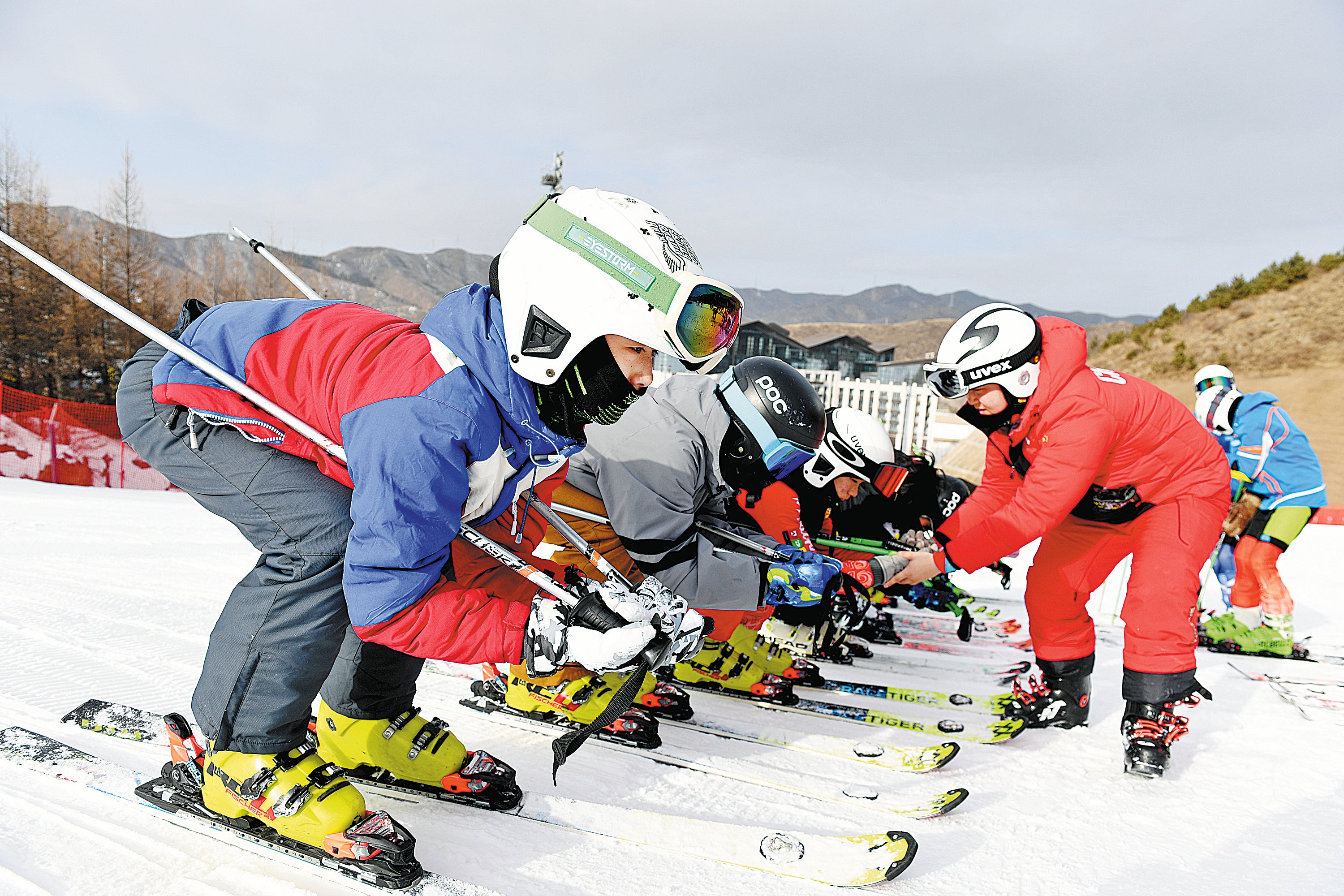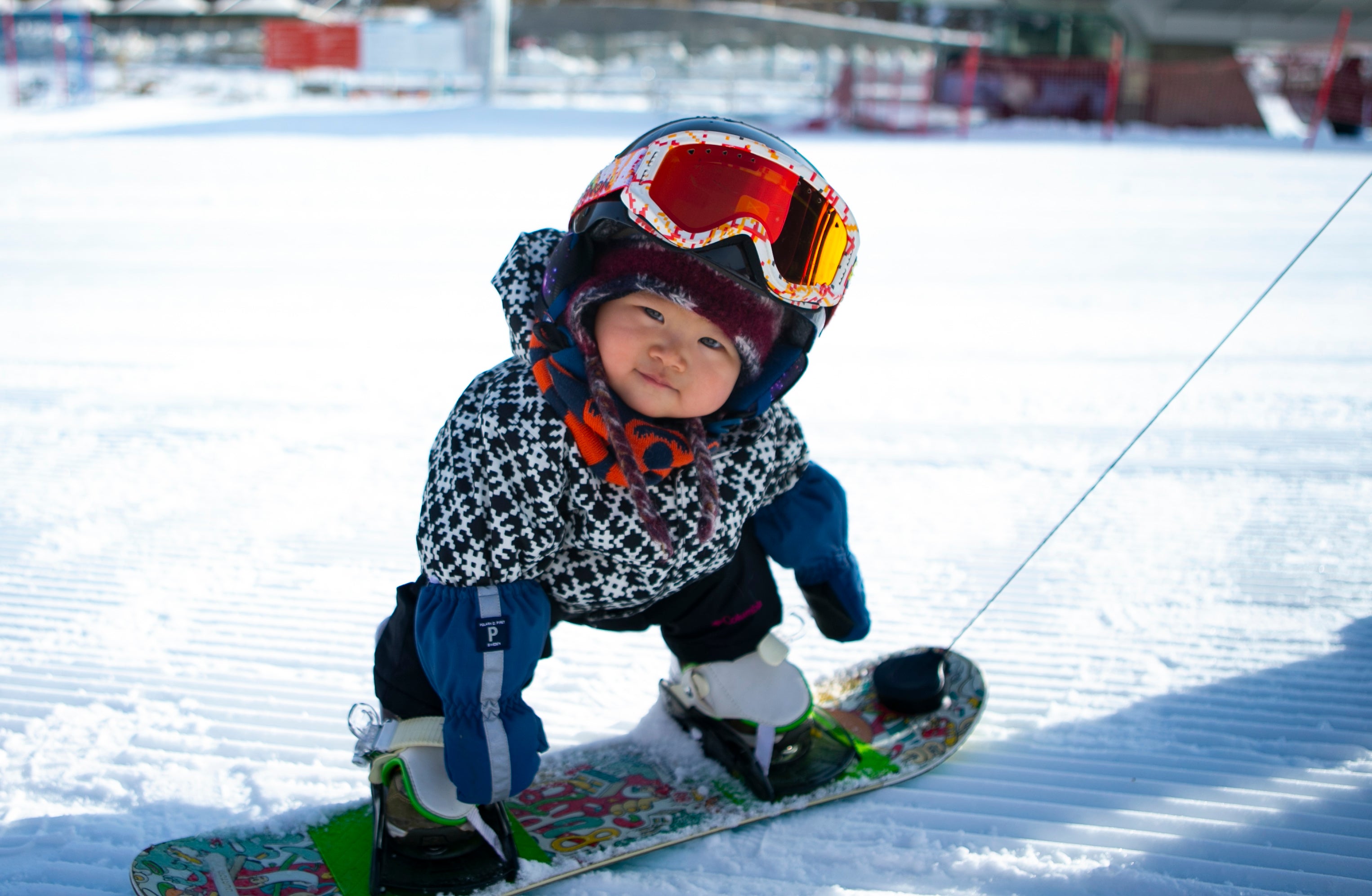Booming interest in ice and snow sports
THE ARTICLES ON THESE PAGES ARE PRODUCED BY CHINA DAILY, WHICH TAKES SOLE RESPONSIBILITY FOR THE CONTENTS

In the countdown to the February start of the Beijing 2022 Winter Olympic Games, ice and snow tourism has picked up among Chinese consumers.
The Games are also expected to fuel more opportunities for businesses in related fields. With the new snow season beginning in China, enthusiastic skiers and snowboarders have been eager to get back on the slopes.
Beijing and Zhangjiakou in Hebei province have established a group of venues to provide services for the Winter Games, including the Beijing-Zhangjiakou high-speed railway. Over the long term, that infrastructure is expected to become additional assets for the country’s tourism based on ice and snow.
The ski venues in Zhangjiakou, about 124 miles northwest of Beijing, will host the snow sports events of the Winter Games. In the past few years, the popularity of the ski resorts there has grown, although a few resorts will be closed for the Games.
A number of landmark Winter Games venues were designed with the idea of continuing to drive tourism after the Olympic and Paralympic Games.
“Those venues are expected to become new hot spots after the Games. Aside from traditional sports such as ice-skating and skiing, more innovative entertainment is expected to emerge and create new experiences for consumers,” said Cheng Chaogong, chief researcher with the tourism research institute of Suzhou-based online travel agency Tongcheng-eLong.
The Winter Games events that tend to draw the greatest public interest include short-track speed skating, speed skating, freestyle skiing, snowboarding and curling, experts said.
Ice and snow sports have become increasingly popular, and lots of people also like to participate in fun activities such as skipping rope in the snow, snow bowling and playing football in a field of snow.
Most of China’s ice and snow tourism occurs in Northeast China, the Beijing-Tianjin-Hebei region and the Xinjiang Uygur and Inner Mongolia autonomous regions. Besides ski resorts, those regions also have important attractions such as ice sculpting, ice fishing and ethnic cultures, Tongcheng-eLong said.

In December, bookings at some ski resort hotels in Jilin province have exceeded those of the same period of 2019, before the pandemic, according to Qunar, a Beijing-based online travel agency.
Winter sports also have become more popular among residents of South China. More cities there have built indoor ski slopes with machine-made snow. Nationwide, 36 indoor ski resorts have been built in China, and Sunac Snow Park in Guangzhou, Guangdong province, has become the most popular, Qunar said.
All this has fuelled the business of skiing equipment makers. A set of equipment for skiing, including a suit, costs about 3,000 to 10,000 yuan (£348 to £1,160) for average skiers. For professional and serious skiers, a whole set could run 60,000 yuan (£6, 870) or more, and limited-edition equipment can go for even higher prices, according to Beijing-based think tank EqualOcean.
High prices for skiing-related merchandise have boosted the profitability of retailers. Retail profit margins for snowboard and ski-suit retailers are usually 40 to 50 per cent, and the margins for helmets and goggles can reach 70 per cent.
For ski resorts, the profit margin is usually around 15 per cent, with ski instruction offering margins of some 30 to 35 per cent, according to enterprise intelligence and management information company MobTech.
“In China, most skiers are mid- to high-income male consumers who live in first-tier and second-tier cities. Most of them are aged between 25 and 34, and their monthly income is above 10,000 yuan [£1,100],” said MobTech.
In China, only one per cent of the population has caught the skiing bug, far lower than the 35 per cent in Switzerland, 9 per cent in Japan and 8 per cent in the United States. That indicates that the sector has significant room for further growth, according to the China Ski Industry Development Report, produced by Carving Ski Group.
Previously published on Chinadaily.com.cn
